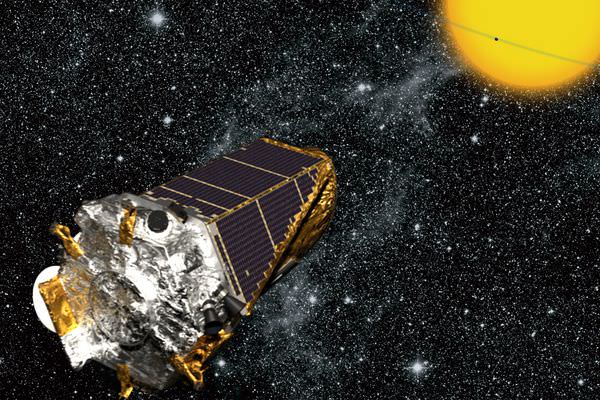Kepler may not be hanging up its planet-hunting hat just yet. Even though two of its four reaction wheels -- which are crucial to long-duration observations of distant stars -- are
no longer operating
, it could still be able to seek out potentially-habitable exoplanets around smaller stars. In fact, in its new 2-wheel mode, Kepler might actually open up a whole new territory of exoplanet exploration looking for Earth-sized worlds orbiting white dwarfs.
An international team of scientists, led by Mukremin Kilic of the University of Oklahoma's Department of Physics and Astronomy, are suggesting that NASA's Kepler spacecraft should turn its gaze toward dim white dwarfs, rather than the brighter main-sequence stars it was previously observing.
– Kilic et al.
Any bio-markers -- such as molecular oxygen, O2 -- could later be identified around such Earth-sized exoplanets by the
JWST
, they propose.
[caption id="attachment_104487" align="alignright" width="250"]
Will Kepler be able to find the first Earth-sized exoplanet -- or even an exomoon -- orbiting a white dwarf? (Illustration of Kepler 22b. Credit: NASA/Ames/JPL-Caltech)[/caption]
Because Kepler's precision has been greatly reduced by the failure of a second reaction wheel
earlier this year
, it cannot accurately aim at large stars for the long periods of time required to identify the minute dips in brightness caused by the silhouetted specks of passing planets. But since white dwarfs -- the dim remains of stars like our Sun -- are much smaller, any eclipsing exoplanets would make a much more pronounced effect on their apparent luminosity.
In effect, exoplanets ranging from Earth- to Jupiter-size orbiting white dwarfs as close as .03 AU -- well within their habitable zones -- would significantly block their light, making Kepler's diminished aim not so much of an issue.
"Given the eclipse signature of Earth-size and larger planets around WDs, the systematic errors due to the pointing problems is not the limiting factor for WDHZ observations," the team assures in their
paper
"Habitable Planets Around White Dwarfs: an Alternate Mission for the Kepler Spacecraft."
Even smaller orbiting objects could potentially be spotted in this fashion, they add... perhaps even as small as the Moon.
The team is proposing a 200-day-long survey of 10,000 known white dwarfs within the
Sloan Digital Sky Survey
(SDSS) area, and expects to find up to 100 exoplanet candidates as well as other "eclipsing short period stellar and sub-stellar companions."
– Kilic et al.
Read the team's full report here
, and learn more about the Kepler mission
here
.
NASA's Ames Research Center made an open call for proposals regarding Kepler's future operations on August 2. Today is the due date for submissions, which will undergo a review process until Nov. 1, 2013.
Added 9/4:
For another take on this, check out Paul Gilster's write-up
on Centauri Dreams.
 Universe Today
Universe Today
